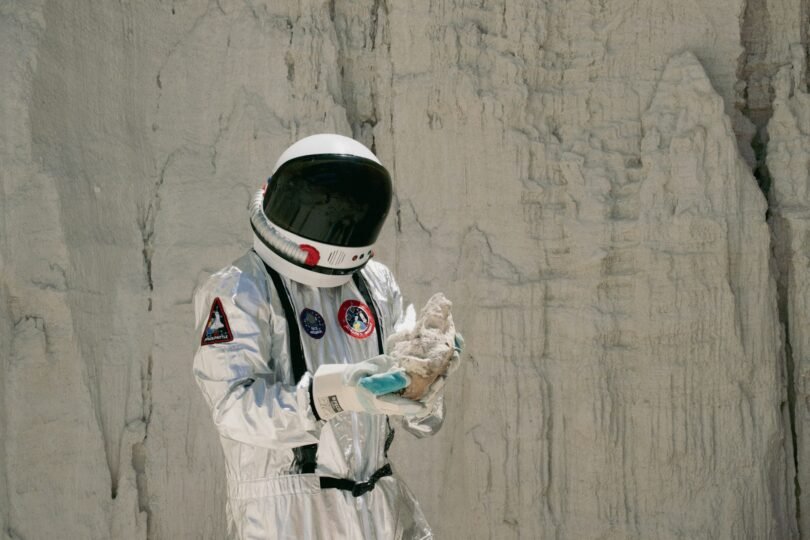Why Rockets Are Still Our Ticket to Space?
Humanity has always looked to the stars with curiosity and wonder. Since the dawn of civilization, people have dreamed of venturing beyond the boundaries of Earth. From ancient myths of flying chariots to the scientific breakthroughs of the modern age, this dream has taken shape through one extraordinary invention: the rocket.
Even in today’s technologically advanced world, where we speak of space elevators, nuclear propulsion, and even warp drives, rockets remain the only practical and reliable method for escaping Earth’s gravity. The question arises: why, after decades of scientific progress, are rockets still our ticket to space?
This article explores the science, history, technological advancements, and future prospects of rockets, ultimately explaining why they remain the backbone of space travel.
1. The Origins of Rocketry
1.1 Ancient Beginnings
The story of rockets begins not with modern physics but with simple gunpowder-powered devices in ancient China around the 9th century. Initially used for fireworks and military applications, these early rockets demonstrated the basic principle of propulsion: action and reaction.
1.2 Scientific Breakthroughs
Centuries later, pioneers like Konstantin Tsiolkovsky, Robert Goddard, and Hermann Oberth provided the theoretical and experimental foundations of rocketry. Tsiolkovsky’s rocket equation explained how a vehicle could reach space by expelling mass at high velocity. Goddard built and launched the world’s first liquid-fueled rocket in 1926, a milestone that paved the way for modern space exploration.
1.3 Cold War and the Space Race
The Cold War era accelerated rocket development. The Soviet Union launched Sputnik in 1957 using the R-7 rocket, shocking the world and marking the dawn of the Space Age. The United States responded with NASA’s Apollo program, culminating in the Saturn V rocket carrying humans to the Moon in 1969. These achievements cemented rockets as humanity’s gateway to space.
2. The Science Behind Rockets
2.1 The Rocket Equation
At the core of rocket science is Newton’s Third Law of Motion: for every action, there is an equal and opposite reaction. Rockets expel mass (propellant) at high speed, creating thrust in the opposite direction.
Tsiolkovsky’s rocket equation mathematically demonstrates the relationship between velocity, exhaust speed, and mass ratio. It shows why rockets must carry enormous amounts of fuel to achieve orbit.
2.2 Escaping Earth’s Gravity
Earth’s gravity well is deep. To reach orbit, a spacecraft must achieve a velocity of about 28,000 km/h (17,500 mph). This requires massive thrust and careful engineering. No other propulsion system besides chemical rockets has yet proven capable of delivering such energy in a short period.
2.3 Staging and Efficiency
Most rockets use multiple stages, each discarding excess weight as fuel is consumed. This design increases efficiency and allows the remaining stages to reach higher velocities. Without staging, reaching space would be nearly impossible.
3. Why Rockets Are Still Essential Today
3.1 No Alternative Yet
Although scientists propose futuristic ideas like space elevators, electromagnetic launchers, and nuclear propulsion, none are currently feasible for escaping Earth’s gravity. Rockets remain the only operational technology capable of reliably delivering satellites, supplies, and humans into orbit.
3.2 Proven Reliability
After decades of refinement, rockets have become highly reliable. Companies like SpaceX, Blue Origin, United Launch Alliance, and national agencies like NASA, ESA, Roscosmos, and ISRO regularly launch missions with increasing success rates.
3.3 Scalability
From small CubeSats to massive interplanetary missions, rockets can be scaled to different payloads. Whether sending a weather satellite to low Earth orbit or launching a probe to Mars, rockets provide the necessary flexibility.
4. The Modern Age of Rocketry
4.1 Reusable Rockets
One of the most revolutionary developments in recent decades is reusability. SpaceX’s Falcon 9 and Falcon Heavy rockets can land and fly again, dramatically lowering the cost of access to space. This innovation is a game-changer, making rockets more sustainable and commercially viable.
4.2 International Collaboration
Today, rockets are not just symbols of competition but of collaboration. The International Space Station (ISS) is supplied by rockets from different nations, and future lunar missions will rely on international partnerships.
4.3 Private Industry’s Role
Private companies have taken the lead in commercial spaceflight. SpaceX, Blue Origin, Rocket Lab, and others are pushing boundaries, aiming not just for Earth orbit but for lunar and Martian exploration. Rockets are now vehicles of entrepreneurship as much as government ambition.
5. Rockets and Human Spaceflight
5.1 Apollo Missions
The Saturn V remains one of the most powerful rockets ever built. Its success enabled humanity’s first steps on the Moon. Without rockets, such historic achievements would have been impossible.
5.2 Space Shuttle Era
NASA’s Space Shuttle, launched from 1981 to 2011, was a reusable spacecraft that relied on rocket boosters to reach orbit. It demonstrated both the potential and risks of rocket-based human spaceflight.
5.3 Artemis and Beyond
NASA’s Artemis program aims to return humans to the Moon using the Space Launch System (SLS), one of the most powerful rockets ever constructed. Rockets continue to play a central role in sending humans deeper into space.
Read More: What Makes a Rocket Fly?
6. Scientific and Commercial Applications
6.1 Satellites
Nearly all satellites—used for communication, weather forecasting, GPS, Earth observation, and scientific research—are launched into orbit by rockets. Our modern way of life depends heavily on these satellite networks.
6.2 Space Probes
From Voyager to Perseverance, interplanetary probes rely on rockets for their initial escape from Earth. Rockets enable humanity to explore the outer planets, asteroids, and even beyond our solar system.
6.3 Space Tourism
With companies like SpaceX and Blue Origin offering commercial flights, rockets are opening the door to space tourism. While still expensive, this industry may grow in the coming decades, making space accessible to more people.
7. Challenges of Rocketry
7.1 High Costs
Despite advancements, rocket launches are still extremely expensive. Even reusable rockets reduce costs only to a certain extent. Large-scale colonization of space will require even cheaper access.
7.2 Environmental Concerns
Rocket launches produce emissions and can contribute to pollution. Some fuels are toxic, and space debris from launches is becoming a growing concern. Sustainable rocket technology is crucial for the future.
7.3 Engineering Complexity
Building rockets requires extreme precision and advanced materials. Small errors can lead to catastrophic failures. The complexity of rocket design remains a major challenge for engineers and scientists.
8. The Future of Rockets
8.1 Next-Generation Propulsion
While chemical rockets dominate today, research is ongoing into nuclear thermal propulsion, ion drives, and plasma engines. These technologies may not replace rockets for launch but could take over for deep-space missions once in orbit.
8.2 Interplanetary Travel
Rockets will be central to humanity’s ambitions of colonizing Mars and exploring other planets. SpaceX’s Starship, designed to be a fully reusable heavy-lift rocket, is being developed specifically for interplanetary missions.
8.3 Space Economy
As space becomes more commercialized—with asteroid mining, orbital factories, and tourism—rockets will remain the delivery trucks of the cosmos. Their importance will only grow as humanity builds a space-based economy.
9. Alternatives to Rockets: Why They’re Not Ready
9.1 Space Elevators
The idea of a cable stretching from Earth to orbit sounds fascinating, but the materials needed (such as carbon nanotubes) are not yet strong enough to make this possible.
9.2 Electromagnetic Launch Systems
Railguns and mass drivers have been proposed, but they would require enormous infrastructure and could not yet safely launch humans due to high acceleration forces.
9.3 Nuclear Pulse Propulsion
Concepts like Project Orion proposed using nuclear explosions for propulsion, but such methods face legal, safety, and environmental concerns.
For now, rockets remain unmatched in practicality and readiness.
10. Rockets as Symbols of Human Progress
Rockets are more than just machines—they are symbols of exploration, ambition, and human ingenuity. Each launch represents not only scientific achievement but also the spirit of curiosity that drives humanity forward.
From sending satellites that connect the world to launching telescopes that peer into the origins of the universe, rockets have transformed our understanding of reality. They are the physical embodiment of our desire to reach beyond boundaries.
Conclusion
Rockets remain our ticket to space because they are currently the only technology capable of overcoming Earth’s immense gravitational pull. Despite high costs, engineering challenges, and environmental concerns, rockets have consistently proven their reliability and adaptability.
From ancient Chinese fireworks to SpaceX’s reusable Starships, rockets have evolved into powerful vehicles of exploration and discovery. While alternative propulsion systems may one day emerge, for now, rockets are indispensable in connecting humanity with the cosmos.
As we look toward the future—returning to the Moon, colonizing Mars, and exploring the outer reaches of the solar system—rockets will continue to be our launchpads to the stars. Humanity’s journey into space has only just begun, and rockets remain the vessels that make it possible.







